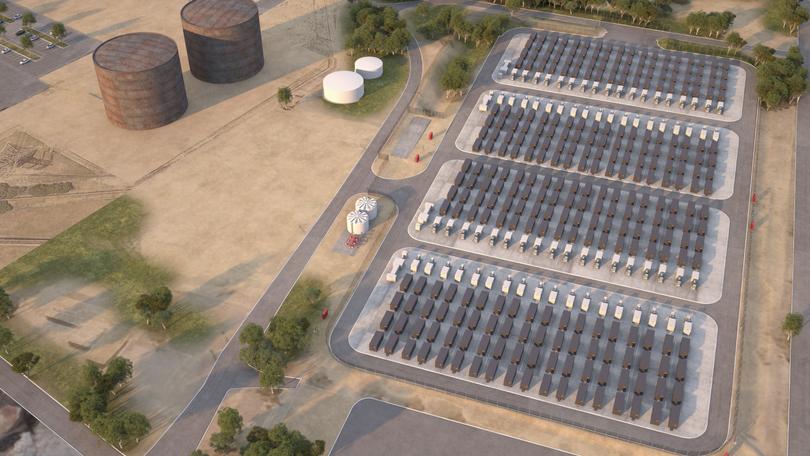As towns and cities across the globe grapple with rising electricity demand, renewable energy integration, and the push for greater energy independence, a new kind of infrastructure is quietly emerging in industrial parks, open fields, and even near residential neighborhoods: massive Battery Energy Storage Systems (BESS). These giant batteries are becoming critical to the future of how communities store, use, and manage electricity—and chances are, one is coming to your town very soon.
What Is a BESS and Why Does It Matter?
A BESS is a large-scale energy storage facility that captures electricity—often from renewable sources like solar or wind—and stores it for use when demand is high or supply is low. Unlike traditional power plants that generate electricity on demand, BESS systems store energy and dispatch it instantly when needed. This makes them a perfect partner for the fluctuating nature of solar and wind power.
From stabilizing the grid to preventing blackouts, these energy storage facilities are revolutionizing how we manage electricity. And their impact is no longer limited to big cities or utility hubs—suburban and rural communities are increasingly becoming host sites for these systems.
Why the Surge in BESS Deployment Now?
Several key forces are driving the rapid construction of BESS across towns and regions:
- Renewable Energy Growth: As solar and wind power projects multiply, there’s a growing need to store excess energy and release it when the sun isn’t shining or the wind isn’t blowing making BESS critical in solar and wind projects. For instance the 1.3 GW Vista Sands Solar Farm which is set to become Wisconsin’s largest solar installation will have a 300MW BESS. This has become the norm with solar and wind power projects.
- Grid Reliability and Resilience: With aging infrastructure and more frequent weather-related outages, utilities are turning to BESS to provide quick-start backup power and grid stabilization.
- Policy and Incentives: Government programs in the U.S., EU, and other regions are offering tax breaks and grants for battery storage projects. The U.S. Inflation Reduction Act, for example, includes incentives specifically for standalone BESS systems.
- Electric Vehicle Adoption: With more EVs plugging into the grid, managing peak demand has become more complex—BESS helps ease this load and ensures reliable energy delivery.
World’s Largest BESS Projects
The scale of BESS projects is growing rapidly, with some of the world’s largest installations setting the pace. In California, the Moss Landing Energy Storage Facility currently leads with a massive capacity of 750 MW / 3,000 MWh, enough to power hundreds of thousands of homes for several hours.
The Darden Clean Energy Project (DCEP), which will integrate a 1,150-megawatt (MW) solar facility and a 4,600 megawatt-hour (MWh) battery system is located in western Fresno County, California. It will becometeh worlds largest battery storage facility once it is completed surpassing the Moss Landing Energy Storage Facility.
In Australia, the Waratah Super Battery in New South Wales, once complete, will deliver 850 MW / 1,680 MWh, playing a key role in grid stability.
Other notable mega-projects include the Crimson Energy Storage project in the U.S. (350 MW / 1,400 MWh), and China’s Dalian Flow Battery Project, a non-lithium BESS boasting 200 MW / 800 MWh, which highlights the diversification of battery chemistries.
In Africa the largest BESS construction project is taking place in South Africa which is the 153 MW/ 612 MWh Red Sands BESS project. It recently reached commercial close by signing project agreements with relevant authorities.
In the state of Georgia in the USA BESS projects totaling 765 MW is now under construction as announced by Georgia Power. In late October of 2025 Georgia Power announced commencement of the 200 megawatt (MW) battery storage facility (BESS) in Twiggs County, located southeast of Macon, Georgia.
These projects are not just energy milestones—they signal that large-scale battery infrastructure is now a central pillar in national energy strategies.
What This Means for Construction and Local Development
BESS projects are becoming as common as solar farms and cell towers in planning commission meetings. For developers, engineers, and contractors, this trend opens up new opportunities in energy infrastructure construction. Projects can range in size from containerized 1–5 MW systems on the edge of town to massive 100+ MW installations supporting entire regions.
Local governments are also recognizing the value. Hosting a BESS project can:
- Generate lease revenue from unused land
- Improve local energy reliability
- Support clean energy goals
What to Expect in Your Area
If your town has growing renewable energy resources, is near a major substation, or has been experiencing power quality issues, it’s likely already on the radar for a future BESS project. Expect to see:
- Grid-scale battery sites tucked behind fences
- Partnerships between utilities and clean energy developers
- Job creation for electricians, engineers, and site contractors
Conclusion
Massive BESS installations are no longer futuristic concepts—they are becoming essential energy assets. As the world transitions to cleaner, smarter, and more resilient energy systems, these batteries will be part of the urban and rural landscape. So don’t be surprised if the next big energy project in your town isn’t a power plant—but a battery.

